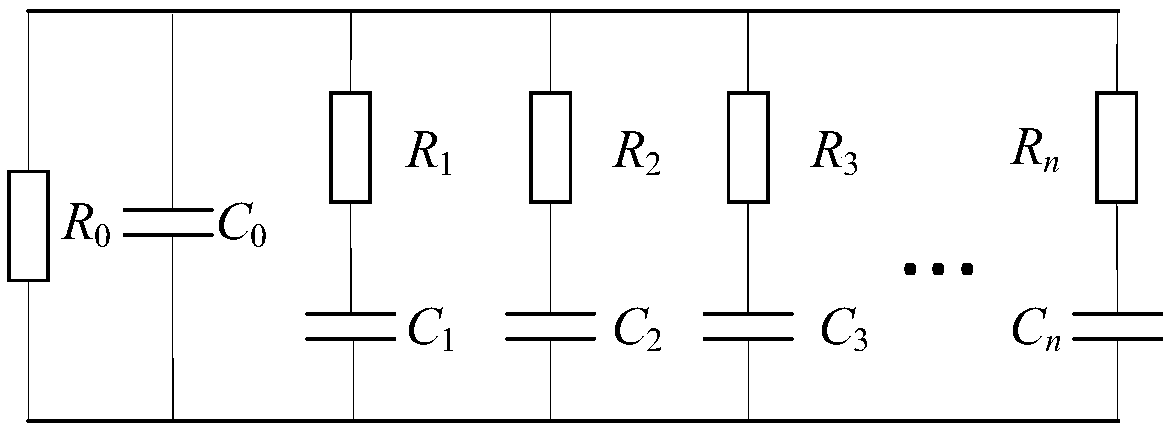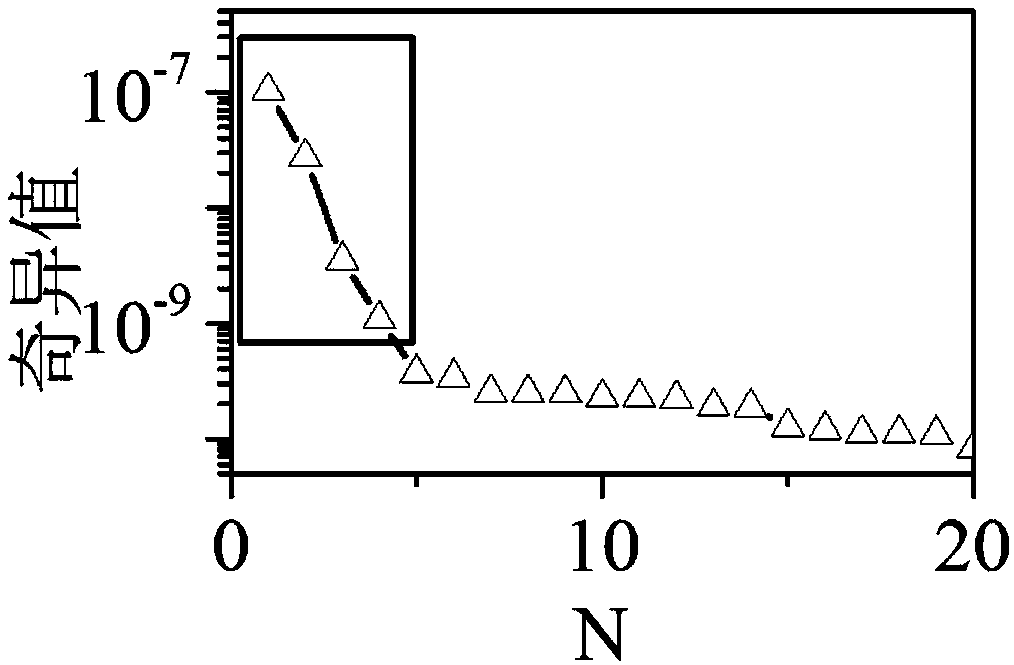Method for evaluating insulation state of electrical equipment
A technology for electrical equipment and insulation state, which is applied in the field of electrical equipment insulation state assessment based on matrix beam algorithm, and can solve problems such as damage, low accuracy and low efficiency.
- Summary
- Abstract
- Description
- Claims
- Application Information
AI Technical Summary
Problems solved by technology
Method used
Image
Examples
Embodiment 1
[0069] Such as figure 1 As shown, a method for evaluating the insulation state of electrical equipment, the steps are as follows:
[0070] S1. The polarization and depolarization currents of electrical equipment are measured according to time-domain dielectric spectroscopy;
[0071] S2, constructing a Hankel matrix with the depolarization current as a parameter;
[0072] S3, performing singular value decomposition on the Hankel matrix, judging the signal subspace and the noise subspace according to the magnitude of the singular value in the singular value curve, and determining the number of relaxation branches and relaxation parameters of the extended Debye model;
[0073] S4. Construct an extended Debye model of electrical equipment insulation by using the determined relaxation branch, and calculate insulation state parameters such as dielectric loss based on this model.
[0074] During implementation, the polarization and depolarization current test method using time-doma...
Embodiment 2
[0104] A device for evaluating the insulation state of electrical equipment, comprising
[0105] The depolarization current collection unit is used to collect the depolarization current of the electrical equipment under test;
[0106] The Hankel matrix construction unit constructs the Hankel matrix Y according to the depolarization current as a parameter;
[0107] The parameter calculation unit is used to perform singular value decomposition on the Hankel matrix Y, determine the effective signal subspace and noise subspace according to the size of the singular value, filter out the noise subspace, and determine the number of relaxation branches p of the extended Debye model according to the effective signal subspace , the coefficient A of the exponential component of each branch i and attenuation coefficient τ i ;
[0108] The Debye model construction unit is used to determine the number of relaxation branches p and the coefficient A of each branch index component according...
Embodiment 3
[0110] A device for evaluating the insulation state of electrical equipment, including a processor, a memory, and one or more modules, the one or more modules are stored in the memory and configured to be executed by the one or more processors , the one or more modules include instructions for executing each step in the method described in Embodiment 1.
[0111] Those skilled in the art should understand that the embodiments of the present application may be provided as methods, systems, or computer program products. Accordingly, the present application may take the form of an entirely hardware embodiment, an entirely software embodiment, or an embodiment combining software and hardware aspects. Furthermore, the present application may take the form of a computer program product embodied on one or more computer-usable storage media (including but not limited to disk storage, CD-ROM, optical storage, etc.) having computer-usable program code embodied therein.
PUM
 Login to View More
Login to View More Abstract
Description
Claims
Application Information
 Login to View More
Login to View More - R&D
- Intellectual Property
- Life Sciences
- Materials
- Tech Scout
- Unparalleled Data Quality
- Higher Quality Content
- 60% Fewer Hallucinations
Browse by: Latest US Patents, China's latest patents, Technical Efficacy Thesaurus, Application Domain, Technology Topic, Popular Technical Reports.
© 2025 PatSnap. All rights reserved.Legal|Privacy policy|Modern Slavery Act Transparency Statement|Sitemap|About US| Contact US: help@patsnap.com



